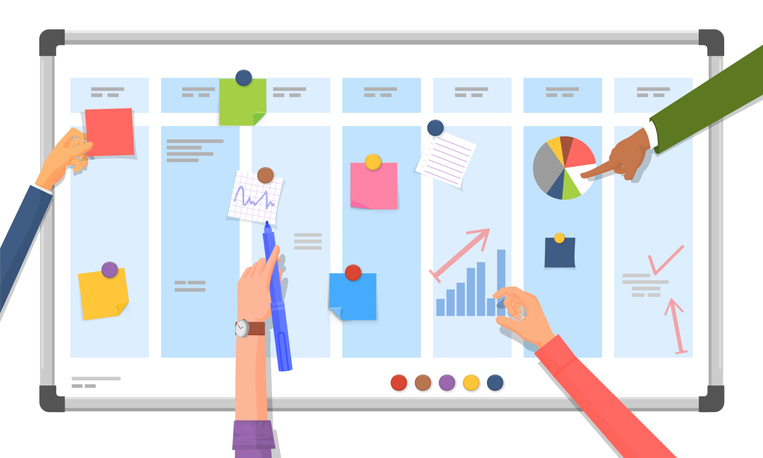
©LadadikArt/iStock/Getty Images Plus
Managing costs across project lifecycles has become an increasingly important business function. If you’re able to accurately forecast both direct and indirect costs while monitoring variances along the way, you can make course corrections as needed. Project managers who have a firm handle on expenditures can avoid unpleasant surprises in the form of cost overruns and improve processes for greater efficiency overall.
That’s the ideal state, but a recent roundup of project management statistics for 2023 suggests that many project management professionals still struggle with resource utilization and performance measurement. More than half of organizations report they don’t have the ability to accurately track key performance indicators in real time and claim that more than 11% of total project resources go to waste because of ineffective processes and an inability to analyze unstructured data.
Cost management is always crucial, but in times of economic uncertainty where budgets get closer scrutiny and project managers are under pressure to demonstrate a positive impact on revenue, the ability to manage expenses and gain insight from data to improve processes is more important than ever. Here’s a closer look at some of the challenges involved in managing project costs and tips on how to create more effective project management processes using accurate cost forecasting.
The Essential Cost Forecasting Toolkit
The upside to managing project costs effectively is enormous, but it’s impossible when unknown factors come into play. For example, if project managers or finance professionals don’t have complete information on the project scope or lack critical data on requirements, forecasts will be inaccurate, and cost overruns and project underperformance will likely follow. Project and finance managers need modern technology, access to real-time data and purpose-built tools to use this data and manage costs effectively.
As every project manager knows, scope creep is a persistent challenge, and when project plans change, the cost of the project changes too. If project managers and finance professionals don’t have the right resources in place to track the downstream impact of project changes, costs can spiral out of control, imperiling the entire initiative.
To avoid unexpected cost overruns and mitigate project risk, project managers must find a way to accurately manage costs via modern schedule and cost integration technology. They also need reliable reporting tools to keep stakeholders informed along the way.
Effective Cost Forecasting Defined
A sound approach to cost forecasting requires analysis of all the resources involved in the project and all the expenses it will take to complete it. This comprehensive view allows project managers to make sure they can achieve project objectives on time and within budget. While most project managers have go-to methods to manage costs, effective cost forecasting is a rigorous discipline, and using standardized techniques and well-designed templates can improve forecasting results significantly.
It’s important to keep in mind that effective cost forecasting must take into account all project costs. They can be categorized using a number of methods, but at the most basic level, there are two groups: direct and indirect costs. Direct costs are usually associated with and billed solely to a specific department or project. Indirect costs fall outside a specific cost center and may be associated with other business units or the entire organization, such as utilities, security and software.
Cost forecasts address each expense, which gives project and finance teams the data they need to analyze project costs and predict any variances between actual and forecast expenses. Costs typically include expenses associated with labor, equipment, materials, third-party services, hardware, software, facility expenses or rates and contingency costs.
Using the Right Technology to Track Project Margins and Create Meaningful Forecasts
Selecting the right metrics is an essential component of effective cost forecasting strategy, and tracking project margins accurately requires software designed for the organization’s industry. For example, a project-focused service organization would need software created for that type of business, which integrates finances with other systems like payroll, HR and procurement.
A purpose-built software solution can enable the organization to accurately track costs, planned revenue and the profit margin, which provides insight into the feasibility of a project before work begins. Once the project is determined to be viable and can get underway, the right technology can generate reports on a number of facets, including billable hours, expense details and accounts payable.
The main challenge for many project-focused companies that need accurate cost forecasting is that they are still using manual processes, spreadsheets and legacy systems that don’t enable a seamless flow of data across applications or are able to analyze unstructured data. To create accurate forecasts, project managers need a way to collect, access and analyze copious amounts of internal and external data.
Both types of data may arrive in an unstructured format, including information contained in emails, documents, audio and video files, presentations, etc. It’s important to find a way to address these format variations because internal data that includes key organizational performance metrics and external data that provides insight on economic and business conditions determine the accuracy of cost forecasting.
With technology that delivers insight from integrated data and enables accurate project cost forecasts, project managers can align their objectives and revenue estimates with corporate strategy and produce reliable reporting to demonstrate impact. At the same time, project managers can continuously improve performance, achieve better project management and minimize the amount of wasted resources.
Bryce Wolf is Senior Manager of Industry Solutions at Unit4